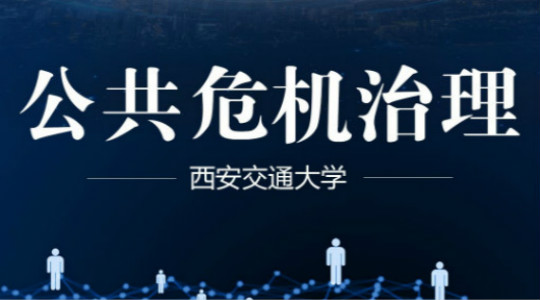
当前课程知识点:Socially-Responsible Real Estate Development: Learning to Use Impact Assessment Tools Effectively > Module 5: Applying SIA and EIA in a Socially Responsible Manner > Lectures > Lecture 3
我现在最后一个模块这个时候总结一下
什么是用有社会责任感的方式使用EIA和SIA
更普遍的是 什么是有社会责任感的
房地产开发
6
首先我认为 EIA和SIA必须要
开发人员参与对话
并最终与社区进行协商的努力的一部分
要做到这一点 就必须要
有一组社区代表
他们被挑选出来来 作为
思考EIA和SIA的代表
检讨其范围 检讨研究结果
共同研究减轻影响和监测
以及补偿应当是什么
当开发人员超出了
环境影响评估或新航的法定要求时
他们就把自己置于一个有利位置
与社会建立积极的关系
如果做对了 获得的受益
应当高于成本
对于一个开发人员来说
任何不符合他们短期和长期利益的事情
都是没有意义的
不应该只是放弃一些你喜欢的东西
这不是有社会责任的房地产开发
所需要的
相反 应该努力实现共同利益最大化
我坚信 我们需要
在EIA和SIA的过程中
加入另一方 另一个角色
你们学习过了这门课
你们知道服务商的存在
也就是在寻求共同利益的机会时
一个专业的中立协助方
负责管理谈话和联合事实发现的过程
于此同时协助当事人
创造尽可能多的价值
很多EIA和SIA过程中没有这样的服务商
我认为这就是这些过程
无法创造出尽可能多价值的原因
不属于利益相关方的人
需要协助利益相关方
来满足规则和监管的需求
倾听各方的意见
并尽可能多创造价值
我们的例子中 服务商是熟练的专业人士
对正在讨论和讨论的实质性问题有所了解
知道如何与训练有素的
有技术的科学顾问合作
同时不在其中提出自己的议程
我认为这个所谓的N+1方
N是试图确保得到某种结果
或者确保满足某种规则的利益相关者方
而这个加1方来协助他们的谈话
对于有社会责任感的房地产开发来说
非常非常重要
这种训练有素的专业人员遍布世界各地
他们只不过是没有被应当的
引入到EIA和SIA过程中
他们帮助开发商和利益相关者
从零和谈判中转移到
到积极增益或对各方均有利的谈判中
为此 各方需要
花点时间面对面 技术人员需要
和其他各方一起坐下来
不只是坐在自己办公室做技术报告
而是和其他各方一起坐下来
进行讨论
我们需要对话
人们在谈话中需要尊重
不同程度的技术
和科学知识
人们需要把他们非常有共鸣的想法
将其转化为寻找新的选项或方案
来帮助我满足各方利益
在EIA和SIA中 我们往往会
从项目区域范围的狭义定义开始
这就排除了
去做做某些边界之外
但开发人员完全可以做到
但又因为不是在最初项目提案范围内
所以通常不会考虑去做的事情的可能性
但如果如果它
对创造总体的缓解和补偿方案至关重要
并且这个方案能为项目提供支持
对开发者来说仍然是净收益
同时也符合所有各方的利益时就可以做
这样的工作必须用透明的方式做
才能成功 才有意义
在我看来 所有的
EIA和SIA会议都应当直播
应当现场直播
这样社区就可以看到
透明能够建立信任
在我看来 我们可以
利用EIA和SIA来实现
有社会责任的房地产开发
它意味着做的比通常所要求的要多
这意味着面对面交谈 但在我看来
每个人都可以做得更多
-Welcome
--Welcome
-Course Welcome
--Welcome
-Entrance Survey
-Entrance Survey
-Learning Objectives
-Course Schedule
-Meet Your Course Instructors
-Grading and Completion Criteria
--html
-Introduction
-Lectures
--html
-Readings
--Social Impact Assessment: The State of the Art
--Social Impact Assessment and Public Participation in China
-Developer Interview
--Module 1
--html
-Questions
-Assignment
--html
--html
--Peer Assessment
-Debrief
--Discuss
-Introduction
-Lectures
-Readings
--Methods of Environmental Impact Assessment
--Public Participation and Environmental Dispute Resolution
--Environmental Impact Assessment for Developing Countries in Asia
--Importance of Nonobjective Judgements
--Example Environmental Impact Statement
-Developer Interview
--html
--Module 2
--html
-Questions
-Assignment
--html
--Peer Assessment
-Debrief
--Discuss
-Introduction
--Text
-Lectures
--html
-Readings
--Introduction to Social Impact Assessment
--Effectiveness in Social Impact Assessment
--Example Social Impact Statement
-Developer Interview
--Video
--Text
-Questions
-Assignment
-Debrief
--Discuss
-Introduction
--Text
-Forest City Case Study
--Part 1
--Part 2
--Part 3
--Additional Forest City Information
-Lectures
-Readings
--Dealing with An Angry Public
--Facility Siting and Public Opposition
-Developer Interview
--Module 4
--Text
-Questions
-Assignment
--html
--SCENARIO
-Debrief
--Discuss
-Introduction
-Lectures
-Readings
--Why Would Corporations Behave in Socially Responsible Ways?
--Social Impact Assessments of Large Dams Throughout the World
--Environmental Sustainability Principles for the Real Estate Industry
-Developer Interview
--Module 5
-Questions
-Assignment
--html
--SCENARIO
-Debrief
-Further Resources
-Thank You
--Thank you for taking the course
-Acknowledgements

